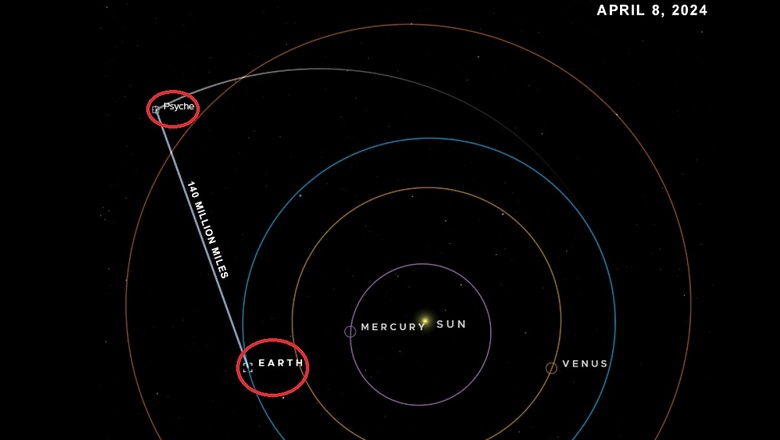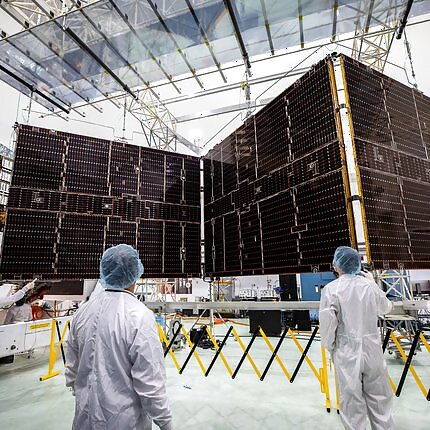
views
In a giant leap for space communications, NASA’s Deep Space Optical Communications experiment has reached a significant milestone: it’s now linked with the communication system of the Psyche spacecraft.
Despite its reliance on radio frequency transmission, this cutting-edge optical technology showcased its power by beaming engineering data across an astounding distance of over 225 million kilometers.
But what does that mean in real terms? This breakthrough not only underlines the potential of optical communications but also hints at a future where data transmission in space could be faster and more versatile.

Laser communications tech
NASA’s Psyche: Solar Arrays Stowed for LaunchMeera Srinivasan, the project’s operations lead at NASA’s Jet Propulsion Laboratory, Southern California, underlined the significance of this accomplishment. She mentioned that the project successfully downlinked about 10 minutes of duplicated spacecraft data, marking a significant milestone in showcasing the integration of optical communications with a spacecraft’s radio frequency communication system.
The laser communications technology showcased in this demo is designed to transmit data from deep space at rates significantly faster than current radio frequency systems. Despite launching in October 2023, the Psyche spacecraft remains healthy and stable on its journey to the main asteroid belt between Mars and Jupiter, where it will explore the asteroid Psyche.
READ MORE: NASA’s Optical Comms Demo Transmits Data Over 140 Million Miles
Test data at 267 Mbps
One of the most notable achievements of the optical communications demonstration was its ability to transmit test data at a maximum rate of 267 megabits per second (Mbps) from the flight laser transceiver’s near-infrared downlink laser. This accomplishment, comparable to broadband internet download speeds, was achieved on December 11, 2023, when the experiment beamed a 15-second ultra-high-definition video to Earth from a distance of 19 million miles.
Despite the increasing distance of the spacecraft, which is now more than seven times farther away, it continued to transmit data at impressive rates. During a test on April 8, the spacecraft transmitted test data at a maximum rate of 25 Mbps, far surpassing the project’s initial goal. The project demonstrated the simultaneous transmission of data optically while Psyche transmitted data over its radio frequency channel to NASA’s Deep Space Network (DSN).
Dual transmission
This dual transmission showcased the versatility and potential of optical communications in future space missions. Ken Andrews, project flight operations lead at JPL, said that while it was a small amount of data downlinked over a short time frame, the fact that it was accomplished surpassed all expectations. The project also conducted experiments to test the capabilities of the optical communications system under various conditions. Despite occasional interruptions due to weather conditions, the project demonstrated the ability to send and receive data even in adverse weather situations.
READ MORE: Watch: NASA Sends Cat Video from Spacecraft 31 Million Kms Away in New Tech Demo
After Psyche launched, the optical communications demo was initially used to downlink pre-loaded data, including the Taters the cat video. Since then, the project has proven that the transceiver can receive data from the high-power uplink laser at JPL’s Table Mountain facility, near Wrightwood, California. Data can even be sent to the transceiver and then downlinked back to Earth on the same night, as the project proved in a recent “turnaround experiment.” This experiment relayed test data — as well as digital pet photographs — to Psyche and back again, a round trip of up to 450 million kilometers.




















Comments
0 comment